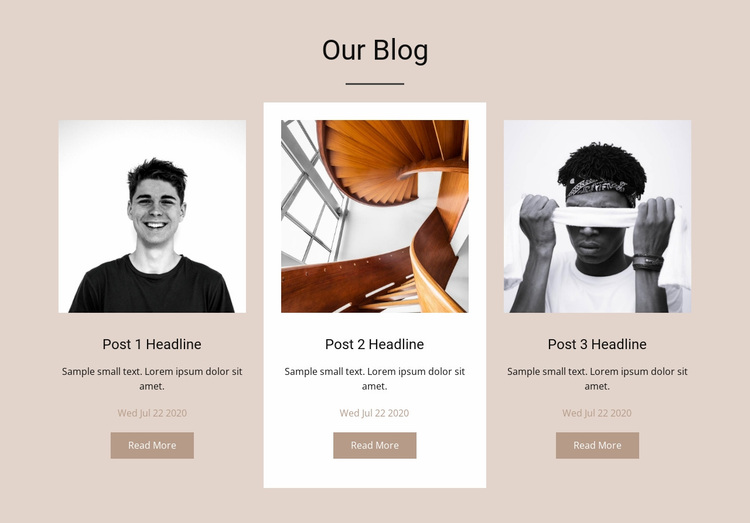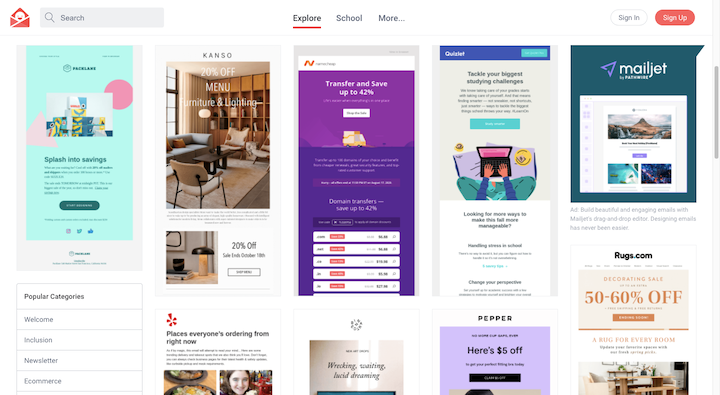How Website Design Can Improve Conversion Rates and Sales
How Website Design Can Improve Conversion Rates and Sales
Blog Article
The Ultimate Overview to Modern Web Site Style Trends
In the ever-evolving electronic landscape, modern website design fads play an essential role in shaping user experience and interaction. From the increase of minimal design concepts that focus on simplicity to the effect of bold typography in specifying brand identification, each element adds to a cohesive on-line presence. The focus on mobile-first and responsive strategies, together with cutting-edge microinteractions, further enhances use. Furthermore, the growing focus on lasting web style methods mirrors a dedication to environmental obligation. These patterns jointly increase important concerns concerning the future of effective website design and what it means for services and customers alike.
Minimalist Style Concepts
Minimalist style concepts highlight the concept that less is a lot more, supporting for simplicity and performance in visual interaction. This strategy remove unneeded elements, focusing rather on necessary components that convey the designated message successfully. By prioritizing quality, minimalist layout enhances individual experience, permitting site visitors to browse websites easily.
Core tenets of minimalist layout include using adequate white area, which produces a feeling of balance and company. This adverse area not only guides the viewer's attention to essential components but also promotes a soothing aesthetic atmosphere. Additionally, a restricted color combination is typically employed, utilizing soft colors or monochromatic systems to keep aesthetic communication and prevent frustrating the individual.
Typography plays a vital role in minimal layout, where readable font styles are picked for their simplicity and effectiveness in connecting web content. Pictures and graphics are conserved, making certain that they serve an objective instead of sidetrack from the overall message. Ultimately, minimal layout principles grow a focused atmosphere that urges customers to engage with the material, improving the total effectiveness of modern-day site layout. This pattern mirrors a growing appreciation for thoughtful, user-centric looks in electronic areas.
Vibrant Typography Choices
Accepting bold typography options has actually become a specifying feature of modern-day internet site design, as it properly catches interest and shares strong messaging. Designers are progressively utilizing typography not simply as a practical component however as a crucial aesthetic component that boosts the total visual and customer experience.

Moreover, the association of strong typography with minimal design concepts enables striking contrasts, improving readability while maintaining visual charm. Making use of whitespace around bold message further emphasizes its relevance, making sure that the message reverberates with the audience.
As digital landscapes come to be a lot more affordable, leveraging vibrant typography allows brand names to separate themselves and leave an enduring perception. The cautious choice of fonts and their application can evoke emotions, establish tone, and drive action, making vibrant typography an important tool in modern site style. Inevitably, it is an effective means to boost narration and ensure that vital messages are not just seen but additionally really felt.
Receptive and Mobile-first Style
Responsive and mobile-first design has actually emerged as an essential principle in modern-day internet site growth, reflecting the enhancing dependence on mobile phones for accessing online web content. As user actions changes towards mobile surfing, developers must click to find out more prioritize creating experiences that adapt effortlessly throughout various screen dimensions and resolutions.
A receptive design makes certain that a site automatically readjusts its design, photos, and capability based upon the gadget being utilized. This approach boosts user experience by offering constant navigating and readability, regardless of whether the visitor gets on a mobile phone, tablet computer, or desktop computer computer. Additionally, mobile-first style supporters for creating websites initially for smaller displays, subsequently scaling up to bigger displays. This approach urges an extra efficient and structured style procedure, focusing on vital web content and functionality first.
Executing responsive and mobile-first principles not only accommodates user preferences yet also lines up with seo (SEO) methods. Significant online search engine, like Google, focus on mobile-friendly internet sites in their positions, making it important for companies to adopt these design strategies. In an affordable digital landscape, embracing receptive and mobile-first layout is not just an alternative; it is essential for ensuring access and engagement investigate this site with a diverse audience.
Involving Microinteractions
Microinteractions play a crucial duty in improving customer involvement and total website experience, specifically in the context of mobile-first and receptive style. These subtle design components give instant responses to customers, making interactions more intuitive and pleasurable. Instances consist of switch computer animations, notification informs, and packing signs, which not only overview individuals however likewise create a sense of link with the interface.
Integrating interesting microinteractions can dramatically improve use by reducing cognitive load. When customers receive aesthetic or auditory comments upon carrying out activities, such as clicking a button or sending a form, they feel more certain in their choices. This fosters a smoother navigation experience, inevitably boosting individual retention.

As internet site design patterns continue to advance, the value of microinteractions can not be overstated. They work as the subtle yet effective touchpoints that transform normal interactions into extraordinary experiences, consequently elevating the general efficiency of contemporary website design.
Sustainable Web Layout Practices
Sustainable internet layout methods are becoming increasingly important as the electronic landscape expands and environmental worries climb. Programmers and designers are acknowledging their obligation to create websites that not just serve visite site customer needs yet likewise decrease ecological impact. This method includes numerous vital methods.
To start with, maximizing energy intake is critical. Sites ought to be developed to pack quickly and effectively, which minimizes server power use and boosts individual experience. Techniques such as photo compression, lessening HTTP demands, and utilizing modern-day coding practices contribute dramatically to this goal.
Second of all, picking eco-friendly organizing companies is important - website design. Many holding business are currently powered by eco-friendly energy sources, allowing sites to operate in a much more sustainable manner. This choice mirrors a commitment to reducing carbon footprints
Additionally, taking on a minimalist design can enhance sustainability. Fewer aspects on a page lead to less data transfer, which not only speeds up filling times but also preserves resources.
Finally, advertising electronic ease of access ensures that internet sites get to a larger target market without unneeded bloat, lining up individual experience with ecological responsibility. By incorporating these sustainable methods, internet designers can add positively to both individual involvement and the earth's health.
Verdict
In summary, modern site layout trends stress the integration of minimalist concepts, bold typography, and responsive style to improve customer experience. Involving microinteractions contribute to memorable interactions, while sustainable techniques advocate for ecologically mindful advancement. Jointly, these components not just raise visual charm however also improve functionality, making certain that web sites are both aesthetically striking and easy to use. Embracing these trends is vital for producing impactful digital experiences that resonate with customers in a significantly affordable on the internet landscape.
In the ever-evolving digital landscape, contemporary internet site style trends play a crucial duty in shaping customer experience and engagement. By focusing on clearness, minimal layout improves user experience, allowing site visitors to navigate web sites effortlessly.
Eventually, minimalist design principles cultivate a focused setting that urges individuals to involve with the web content, enhancing the total effectiveness of modern-day site layout.Microinteractions play a critical role in improving customer involvement and total internet site experience, particularly in the context of receptive and mobile-first design.In summary, modern website style fads emphasize the integration of minimal concepts, bold typography, and responsive style to boost user experience.
Report this page